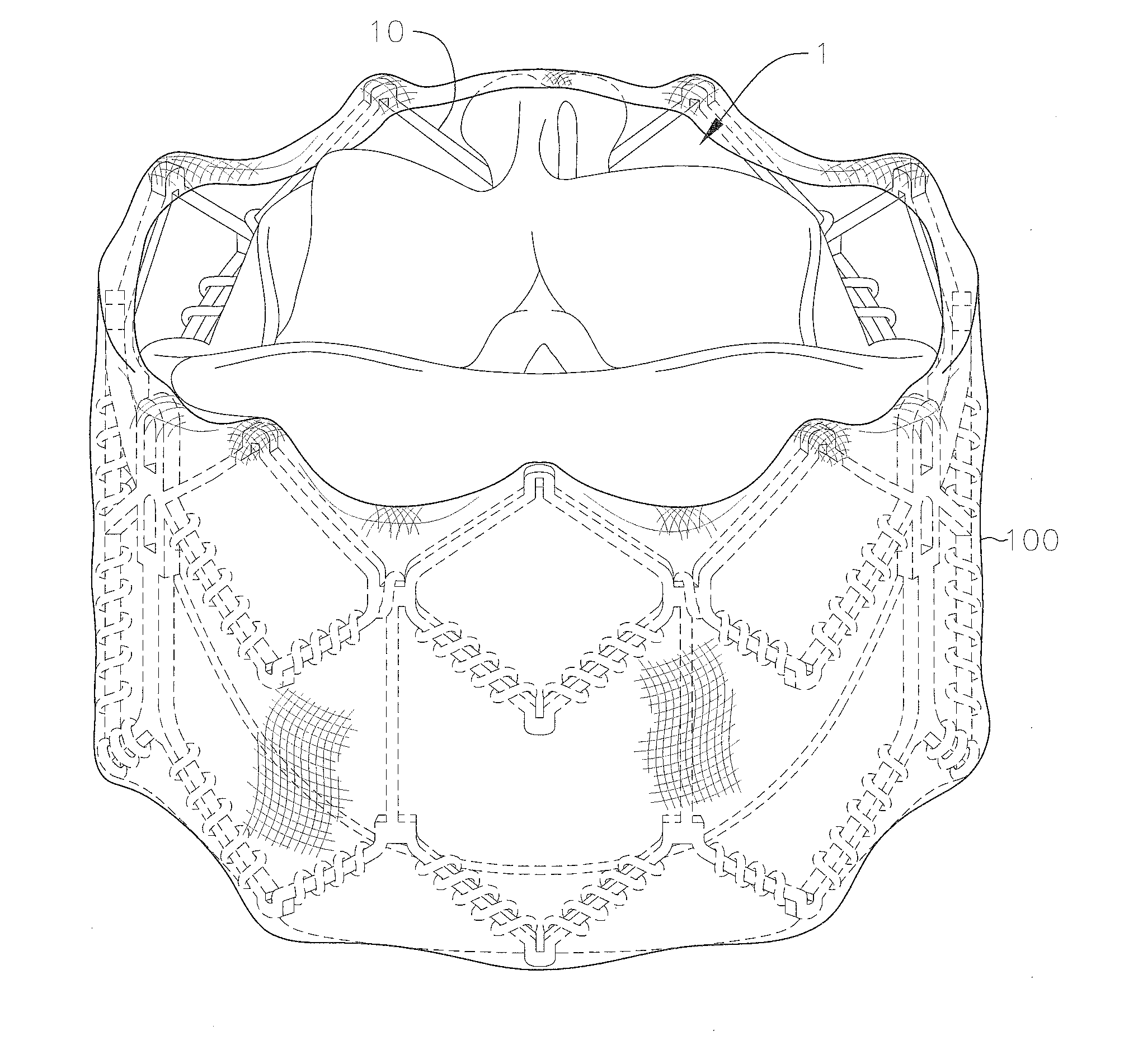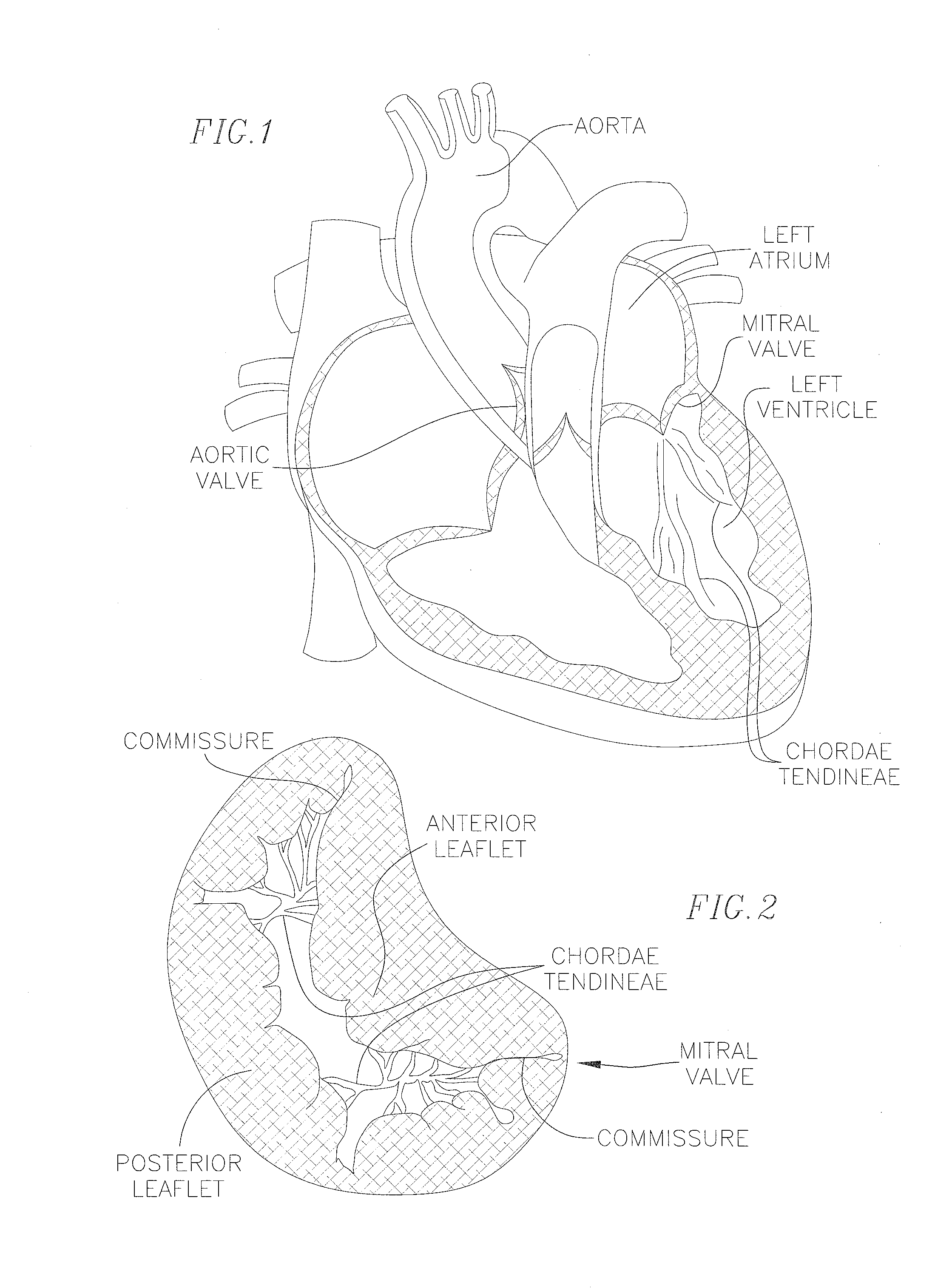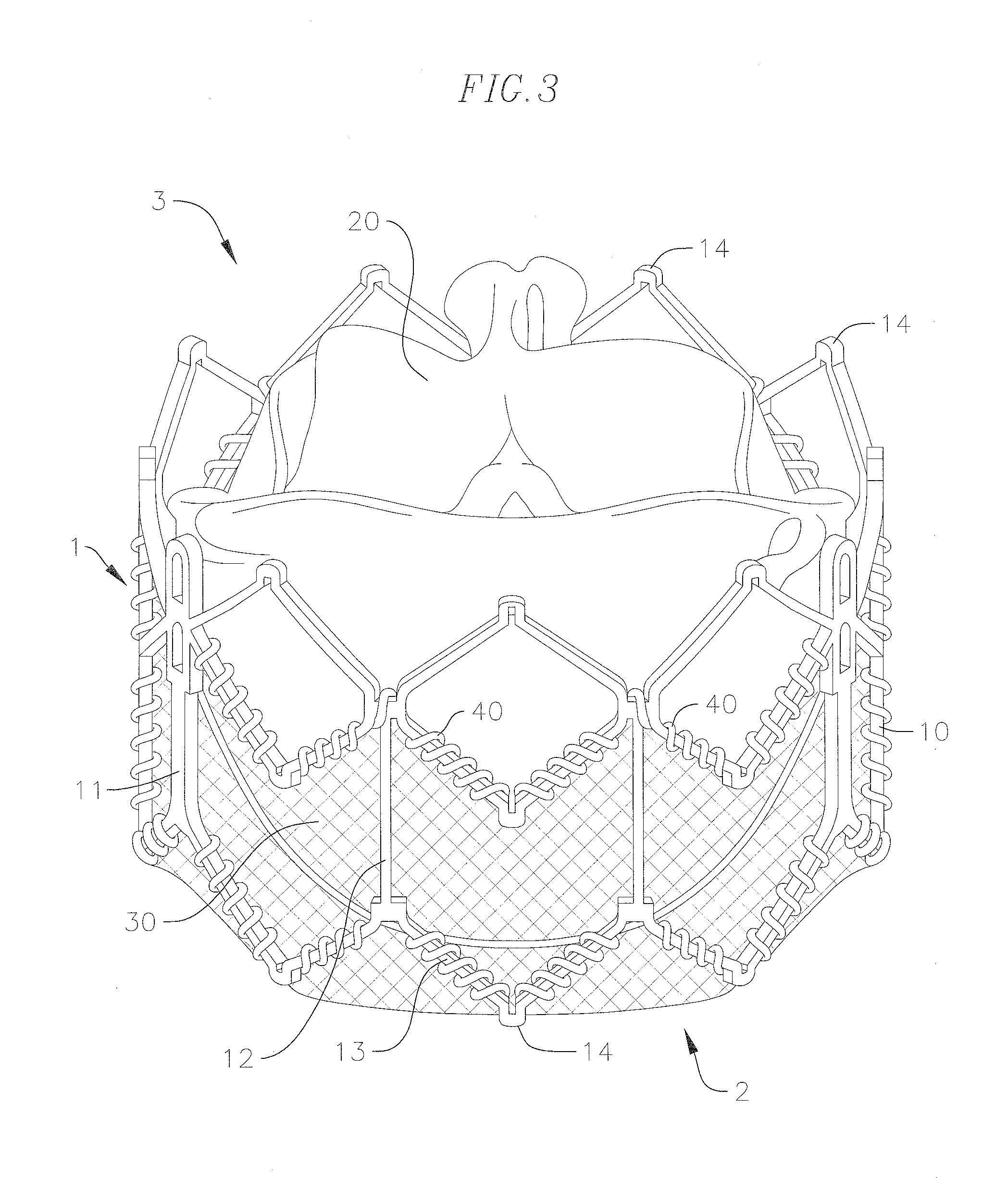Covering and assembly method for transcatheter valve
- Summary
- Abstract
- Description
- Claims
- Application Information
AI Technical Summary
Benefits of technology
Problems solved by technology
Method used
Image
Examples
second embodiment
[0050]An alternative approach is provided in the embodiment illustrated in FIGS. 6 and 7. FIGS. 6 and 7 show the invention, which includes a casing or covering 200 that is a stand-alone accessory that can be attached to an existing valve prosthesis by a practitioner or other end user. A main body 210 of the covering 200 can be made of a biocompatible cloth or other suitable biocompatible material with low friction and low abrasive properties. The cloth or other material used for the body 210 can be constructed of a stretchable material, possibly a knitted or otherwise breathable material, and / or a material that will promote ingrowth after implantation. The body 210 of the covering 200 is a generally rectangular cloth with a central portion 211 sized and shaped to wrap around the entire prosthetic valve 1 in a circumferential direction. The body 210 further includes loop portions 212 on one or both ends of the central portion 211, that will be positioned approximate the inflow and ou...
third embodiment
[0053]FIGS. 8A, 8B, and 9 show the invention, which includes another coat or covering 300 that is a stand-alone accessory attachable to an existing valve prosthesis by an end user. A main body 310 of the covering 300 can be similar in size and shape to the main body 210 of the covering 200 in FIGS. 6 and 7, and can be made of a biocompatible cloth or other material with similar properties as those discussed with respect to the body 210 of the covering 200. A length of a central portion 311 of the body 310 of the covering 300 is sufficient for circumferentially wrapping the covering 300 around the entire prosthetic valve 1.
[0054]The covering 300 differs from the covering 200 in FIGS. 6 and 7 in the construction of the attachment mechanisms for attaching the respective coverings to the prosthetic valve 1. Rather than the loop portions 212 and the strings or threads 220, the covering 300 instead has an open first end 312 with a plurality of stringed or threaded loops 320 attached there...
fourth embodiment
[0071]Using a covering with loops can reduce the time it takes to thread or transmit sutures from one side of the valve frame and covering to the other side of the valve frame and covering. Furthermore, the suturing process becomes easier and quicker for the end user, because the sutures only need be threaded through the large loops instead of through an eye of a needle or other sharp threading tool, and use of sharp tools around the valve leaflet tissue is no longer necessary, eliminating the possibility of unintended damage to the leaflets caused by any such sharp tools, and thereby improving the overall performance of the implanted valves in general. In addition, since the loops are threaded through and pre-positioned on the covering during manufacturing, accuracy of the through holes for the sutures can be pre-set, leading to more accurate placement of the sutures and less errors.
[0072]While the above embodiments better protect the tissue surrounding the prosthetic valve implan...
PUM
 Login to View More
Login to View More Abstract
Description
Claims
Application Information
 Login to View More
Login to View More - R&D
- Intellectual Property
- Life Sciences
- Materials
- Tech Scout
- Unparalleled Data Quality
- Higher Quality Content
- 60% Fewer Hallucinations
Browse by: Latest US Patents, China's latest patents, Technical Efficacy Thesaurus, Application Domain, Technology Topic, Popular Technical Reports.
© 2025 PatSnap. All rights reserved.Legal|Privacy policy|Modern Slavery Act Transparency Statement|Sitemap|About US| Contact US: help@patsnap.com



